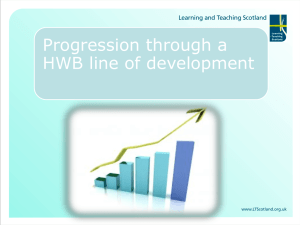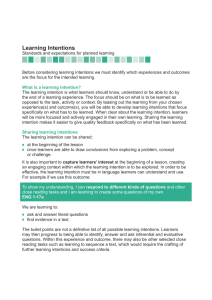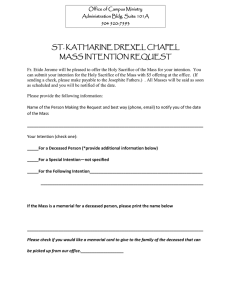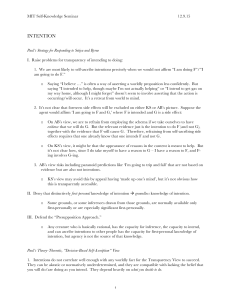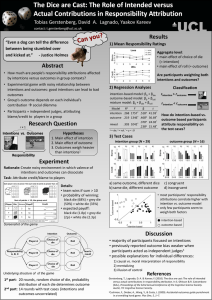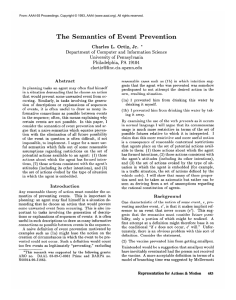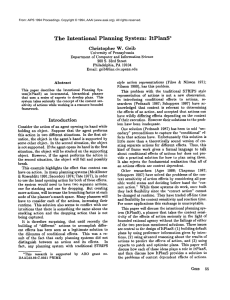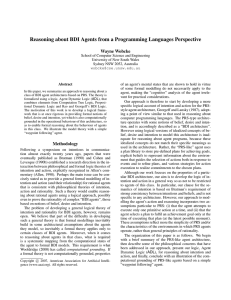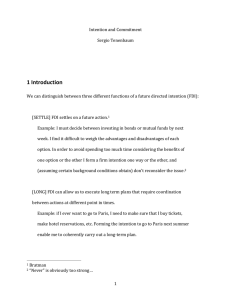Making sense of Learning Intentions and Success Criteria
advertisement
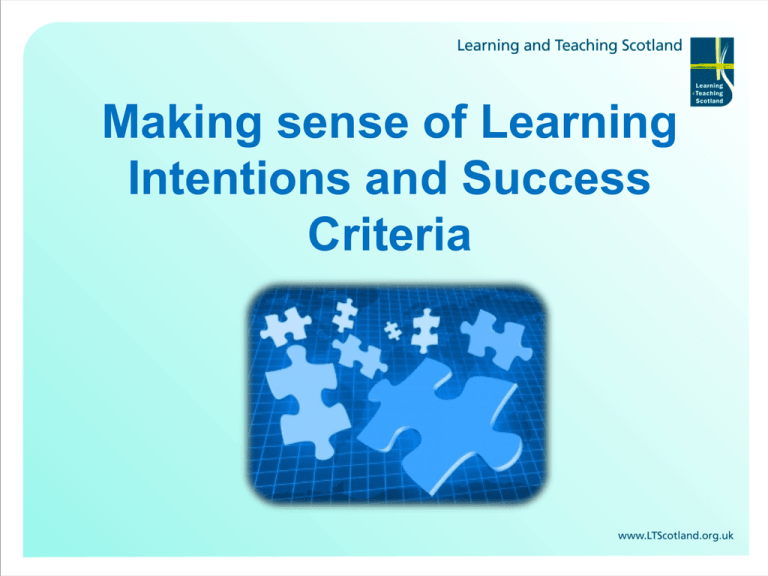
Making sense of Learning Intentions and Success Criteria What makes good Learning Intentions and Success Criteria? Learning Intentions + Success Criteria What is a Learning Intention? A learning intention describes what pupils should know, understand or be able to do by the end of the lesson or series of lessons. Learning Intentions: • Identify and define new learning • Focus on transferable skills What is the Learning? Learning Intentions can be written for: ‘knowledge and understanding’ or ‘skills’ or ‘attributes and capabilities’ or any combination of these. Defining the Learning Intention • Activity: What are we doing? - Playing a game of Snakes and Ladders. • Learning Intention: What are we learning? - To take turns fairly. • Context: Vehicle for the learning - The Game What does a good learning intention look like? • • • • Linked to the actual learning, not the context. Not simply a description of the activity. Often describe transferable skills. Reflect the language of the experience and outcome and the skills and knowledge within it. • Focused, straightforward and easy to understand. • Agreed in discussion with the learners. What do good Success Criteria look like? • Linked to the learning intention. • Emphasise the process, rather than end product: knowing, thinking or using skills. • Reflect the skills and knowledge that you will see the children and young people employing. • Avoid repetition of the learning intention. • Not a general description of the end product or the skill (neat writing, four out of five right). • Agreed in discussion with the learners. Success Criteria How do we know we have met the learning intention? What has been the impact of the learning experiences? How can we measure how much and how well children and young people have learned? Giving feedback through Learning Conversations Learning conversations....... • Are quality interactions which deepen understanding of learning • Should be ongoing throughout the learning experience as well as at the end. • Can be peer / class or teacher to learner. • Use open questions to encourage reflection on learning • Should reflect on learning and inform next steps in the learning journey Discussion Activity Within this experience and outcome, which skills and knowledge might you and the learners choose to focus on? How can you ensure that learning builds on what has gone before? How might it look and feel different at different levels? What learning experiences might you set up to engage and motivate learners?


